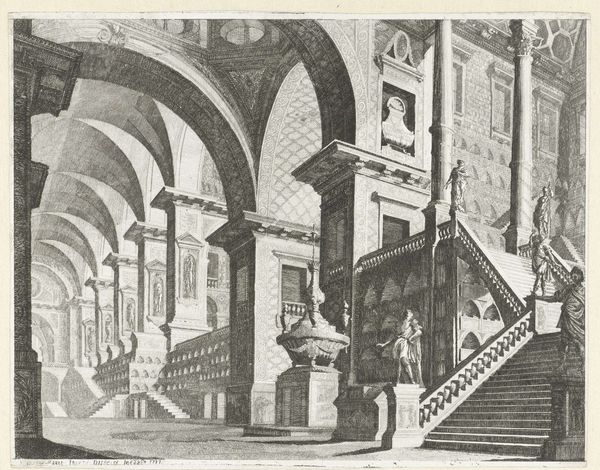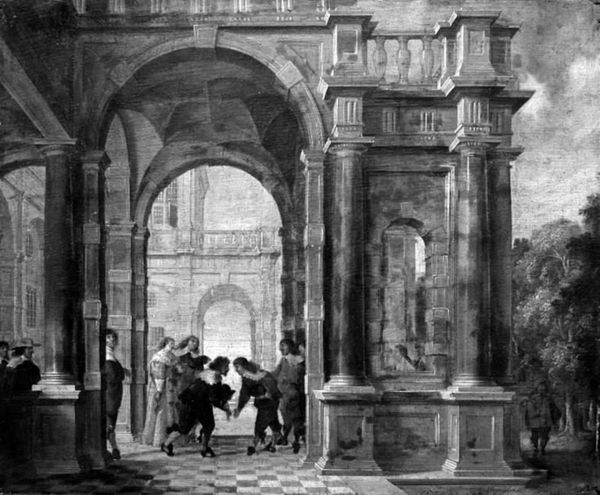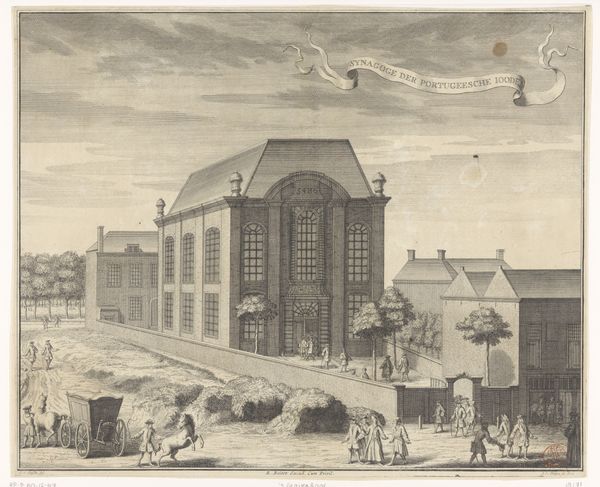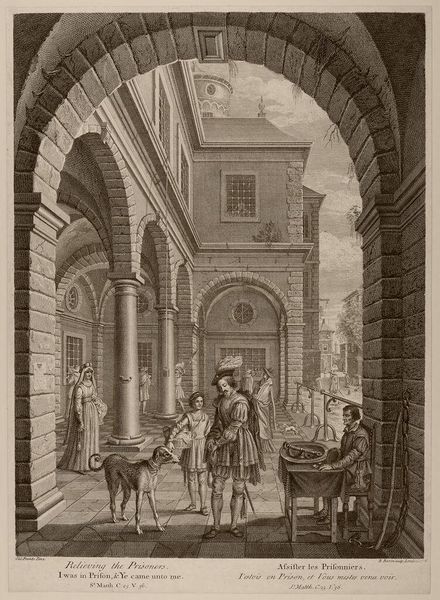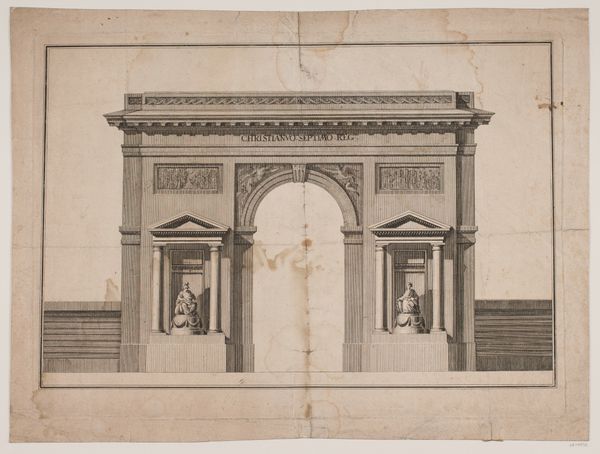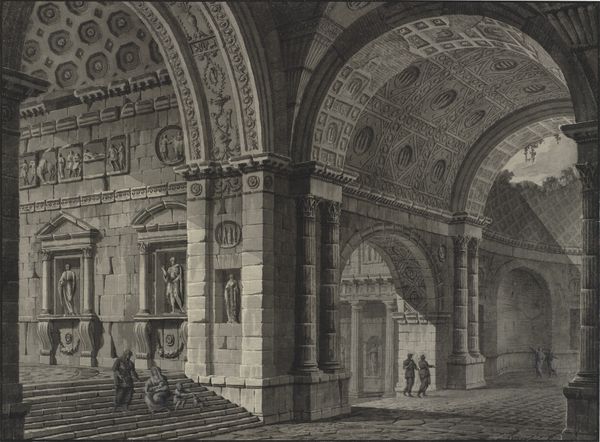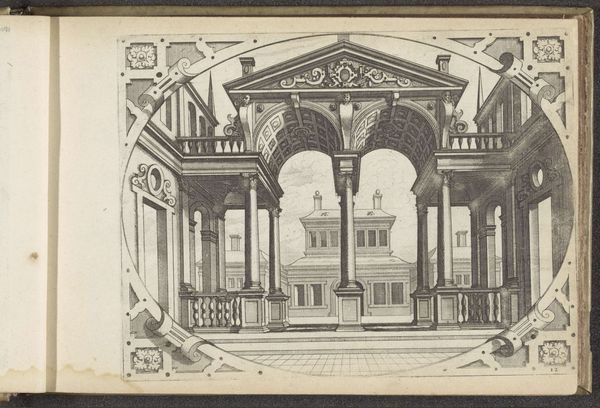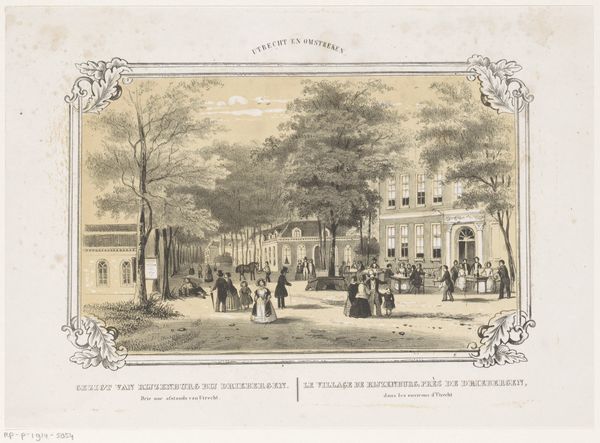
drawing, ink, wood, architecture
#
drawing
#
dutch-golden-age
#
landscape
#
historic architecture
#
ink
#
wood
#
genre-painting
#
architecture
#
realism
#
historical building
Dimensions: 39.5 cm (height) x 53 cm (width) (Netto)
Editor: So this is Hans Jurriaensz van Baden's "View of a Manor House," created in 1638, using ink and wood for the drawing. It's a pretty formal scene, but there is an appealing mood to the whole space and how light passes through the repeated archways. How would you interpret this work? Curator: It strikes me as a symbolic staging of societal values. Notice the strong architectural forms. Do they speak of power and stability to you? The manor house, meticulously rendered, signifies not just wealth but also the enduring legacy of a family and, by extension, a certain social order. The symmetry and repeated arches might indicate a desire for control and predictability in a world undergoing significant change. Editor: Yes, the manor definitely stands out, but what about the people? The artist has included staff, pets, people riding horses… Curator: Indeed! Look at their arrangement within the composition. The figures aren't simply placed; they're positioned to reflect a hierarchy, don’t you think? Each one adds depth and life but remains subservient to the grand architecture. It is tempting to consider each of them an attribute to the Lord that dwells inside. The dog, in particular, as a symbol of loyalty and the couple as procreators. They reinforce the idealized vision of domestic order and social harmony. Even the fountain serves as a symbolic reference for freshness, life, and provision. Editor: That’s a great point about social order. I hadn’t considered how much it influences the arrangement. Thanks, this was fascinating. Curator: My pleasure. Thinking about symbols embedded in the most commonplace depictions opens our eyes to the values a culture holds dear.
Comments
No comments
Be the first to comment and join the conversation on the ultimate creative platform.


